Imagination, Indigeneity, and Computation: The SIGGRAPH 2018 Art Gallery
Abstract
:1. Introduction
In 2018, the conference took place in Vancouver, and the gallery was conceived under the curatorial format, though on some other occasions it has been managed through an Open Call system, therefore my role was that of the Art Gallery Chair and also Art Gallery curator. The task of putting together the art show involved the interaction with the other members of the SIGGRAPH organization, including chairs of related tracks like the Art Papers Chair, the coordination of a section of a publication, the Leonardo Journal SIGGRAPH special issue and more importantly the selection of the artworks that will constitute the exhibition itself organizing a series of artists talks as part of the gallery activities.(see Supplementary Materials)
The exhibition aimed to articulate myth and technology, science and art, the deep past and the computational present. Building upon an eclectic selection of creative practices mediated through technologies that represent the complexity and refinement of our times. The venue intended to rekindle the original spark that ignited the collaborative spirit in the community of engineers, scientists, and artists who came together to create our community.
2. The Exhibition
2.1. History of Visual Computing
2.2. Digital Media Art by Indigenous Communities
Kiowa author N. Scott Momaday wrote that the ‘greatest tragedy that can befall us is to go unimagined.’ A great tragedy has already befallen Native people. We live in a society defined by greed for the land and its resources, hate for our cultures and genocide of our peoples. This fact undermines any notion that settler Canadians live in a society that is fair and just for all. It is a foundation that poisons every institution that grows from it. Neither apologies nor reconciliation will rectify it.
2.3. Art and Science Collaborations
2.4. Thematic Connection with the Original Narratives
2.5. Origins + Journeys Online Gallery
3. Materials and Methods
the future of the museum—and by extension, the future of the gallery and the exhibition—is discussed in terms of its relationship to computers. He argues that rather than asking if computers have a place in the museum, curators should instead ask how the various components of computers can be used as an organizational metaphor for museum activities. The computer’s memory can be understood as the museum’s archives, the computer’s access to a network can be understood as the distribution of knowledge to the public, and the computer’s many processing operations can be understood as the various aspects of the curatorial process.
4. History of Computer Arts and Computer-Aided Design
4.1. Art Systems 1968–2018
4.2. Archaeology of CAD: Interactive Software Reconstructions of the Coons Patch and Sketchpad
In its pairing of historical and contemporary material, Designing the Computational Image shows that computer-aided has a pronounced legacy in aesthetics. The image-making practices and visual conventions developed half a century ago are now firmly lodged in the collective imagination of design. In my field, architecture, everyone now uses computers; students today are being enculturated to appreciate computational images even if they have no particular passion for long-obsolete technologies. Reinterpreting the history of computer-aided design as an aesthetic movement is thus crucial to maintaining its resonance with the present. Cardoso-Llach’s exhibition has shown that the images on display still resonate strongly.
5. Discussion
Supplementary Materials
Funding
Conflicts of Interest
Appendix A
| Artists, Laboratories | Artworks, Projects |
|---|---|
| History of Visual Computing Node | |
| Ernest Edmonds, De Montfort University. “H Space” team: Yingqing Xu, Xin Tong, YI JI, and Damian Hills. | Nineteen (1968), Datapack (1969), Communication Game (1972), Shaping Form (2002), and H Space (2018), premiere. All these artworks are directly related to papers published in Leonardo since 1973. |
| Daniel Cardoso-Llach, Carnegie Mellon University. Scott Donaldson, iStrategyLabs. | Archaeology of CAD: Interactive Software Reconstructions of the “Coons Patch” and “Sketchpad.” |
| Digital Media Art by Indigenous Communities Node | |
| Skawennati. | She Falls for Ages (2016). |
| Nā ‘Anae Mahiki - Aboriginal Territories in Cyberspace. | He Ao Hou, A New World (2017). |
| Shawn Hunt, Independent Artist. Microsoft Garage team: Robert Butterworth, Jeremy Kersey, Andy Klein, Julia Taylor-Hell, Jonathan Cobb, Brent Silk, Brendan O’Rourke, and Stacey Mulcahy. | Transformation Mask (2017). |
| Amy Fredeen, Cook Inlet Tribal Council. Dima Veryovka, E-Line Media, and Upper One Games. | Never Alone (Kisima Inŋitchuŋa): The Art and the People of the Story (2016). |
| Art and Science Collaborations Node | |
| Danny Bazo, Meow Wolf. Marko Peljhan UCSB, Projekt Atol Institute. Karl Yerkes, UCSB. | Somnium (2016). |
| Ruth West, University of North Texas, xREZ Art + Science Lab. Violet Johnson, University of North Texas, xREZ Art + Science Lab. I Chen Yeh, University of North Texas, xREZ Art + Science Lab. Zach Thomas, University of North Texas, xREZ Art + Science Lab. Eitan Mendelowitz, Mount Holyoke College. Lars Berg, Independent Artist. | INSTRUMENT | One Antarctic Night (2018), premiere. |
| Thematic Connection with the Original Narratives Node | |
| Ozge Samanci, Northwestern University. Gabriel Caniglia, Northwestern University. | You Are the Ocean (2017). |
| Milton Sogabe, São Paulo State University. Fernando Luiz Fogliano, University of São Paulo. Fabio Oliveira Nunes, UNESP. Carolina Peres, UNESP. Soraya Braz, UNESP. Rodrigo Dorta, UNESP. Cleber Gazana, UNESP. Mirian Steinberg, UNESP. Melina Furquim, UNESP. Daniel Malva, UNESP. | Sopro and Toque (The Blow and Touch) 2016. |
| Nicole L’Huillier, MIT/Media Lab. Yasushi Sakai, MIT/Media Lab. Thomas Sanchez Lengeling, MIT. | Diastrophisms, (2017). |
| Alex Beim, Tangible Interaction. | Haven (2018), premiere. |
| Origins and Journeys Online Exhibition Node | |
| Volker Kuchelmeister, UNSW University of New South Wales. | Topography of the Unseen. |
| Esteban Gutiérrez, FUBA. | Occupation. |
| Leslie Nobler, William Paterson University. | Roots, Journeys, Diaspora and Refuge. |
| Jennifer Zaylea, University of the Arts. | Deconstruct to Reconstruct. |
| Yuan-Yi Fan, yuanyifan.com. | Structural Analogy. |
| Francesca Franco, University of Exeter. | Algorithmic Signs-Five Pioneers of Computer Art in Conversation. |
| Anna Ursyn, University of Northern Colorado; Robert Ehle, University of Northern Colorado. | Dot. |
| Albert Barqué-Durán, Quo Artis Foundation; Marc Marzenit, Quo Artis Foundation; Elisa Ferrè, Vestibular Multisensory Embodiment, Royal Holloway University of London. | The Zero-Gravity Band. |
| Daniel Pillis, Carnegie Mellon University. | A Brief History of Computer Graphics. |
| Ella Husbands, Independent Artist. | Embodied Distortion. |
| Cynthia Beth Rubin, C B Rubin Studio; Kris Tonski, Fusion Design; Yona Verwer, YV Studio. | Zodiacs in the Lower East Side. |
| Carlos Rosas, The Pennsylvania State University. | “Unsettled Interlude | Origin: 45.79835°, −92, 36738°”. |
| Carlos Rosas, The Pennsylvania State University. | “Unsettled Drift | Origin 44.981397°, −93.150807°”. |
| Yucef Merhi, Independent Artist. | Quetzalcoatl 2.0.1.2. |
References
- Allen, Matthew. 2018. The computational imagination: Notes on the exhibition designing the computational image, imagining computational design. Leonardo 51: 424–25. [Google Scholar] [CrossRef]
- Burbano, Andres. 2011. Between Punched Film Stock and the First Computers. In ReLive: Media Art Histories. Edited by Sean Cubitt and Paul Thomas. Cambridge: The MIT Press. [Google Scholar]
- Burbano, Andres. 2018. Original narratives art gallery: Introduction. Leonardo 51: 420–21. [Google Scholar] [CrossRef]
- Burbano, Andres, and Esteban García Bravo. 2015. Breaking the Navajo code with Bill Toledo. Artnodes, 26–33. [Google Scholar] [CrossRef] [Green Version]
- Cardoso-Llach, Daniel. 2015. Builders of the Vision: Software and the Imagination of Design. New York: Routledge. [Google Scholar]
- Cook, Sarah, and Beryl Graham. 2010. A Brief History of Curating New Media Art. Berlin: The Green Box. [Google Scholar]
- Edmonds, Ernest. 2018. Art systems: 1968 to 2018. Leonardo 51: 426–28. [Google Scholar]
- Edmonds, Ernest, and Margaret Boden. 2019. From Fingers to Digits: An Artificial Aesthetic. Cambridge: The MIT Press. [Google Scholar]
- Forbes, Angus. 2018. Art papers jury: Introducing the SIGGRAPH 2018 art papers. Leonardo 51: 332–35. [Google Scholar] [CrossRef]
- Franco, Francesca. 2017. Generative Systems Art: The Work of Ernest Edmonds. New York: Routledge. [Google Scholar]
- Franke, Herbert. 2012. Computer Graphics—Computer Art. Berlin: Springer Science & Business Media. [Google Scholar]
- García Bravo, Esteban, Andres Burbano, Vetria Byrd, and Angus Forbes. 2017. The interactive image: A media archaeology approach. Leonardo 50: 368–75. [Google Scholar]
- Gollifer, Sue. 2016. ACM SIGGRAPH distinguished artist award for lifetime achievement in digital art. Leonardo 50: 354–55. [Google Scholar] [CrossRef]
- Kane, Carolyn L. 2014. Algorithms: Synthetic Color, Computer Art, and Aesthetics after Code. Chicago: University of Chicago Press. [Google Scholar]
- Kittler, Friedrich. 2017. No hay software y otros ensayos sobre filosofía de la tecnología. Manizales: Universidad de Caldas. [Google Scholar]
- Lewis, Jason Edward, and Skawennati. 2018. The future is Indigenous. Leonardo 51: 422–23. [Google Scholar] [CrossRef]
- Mitchell, Bonnie, and Jan Searleman. 2018. ACM SIGGRAPH Art Shows Archive. Available online: https://digitalartarchive.siggraph.org/ (accessed on 11 January 2019).
- Patterson, Zabet. 2015. Peripheral Vision. Cambridge: The MIT Press. [Google Scholar]
- Peddie, Jon. 2013. The History of Visual Magic in Computers: How Beautiful Images are Made in CAD, 3D, VR and AR. London: Springer. [Google Scholar]
- Snow, C.P. 1959. The Two Cultures. New York: Cambridge University Press. [Google Scholar]

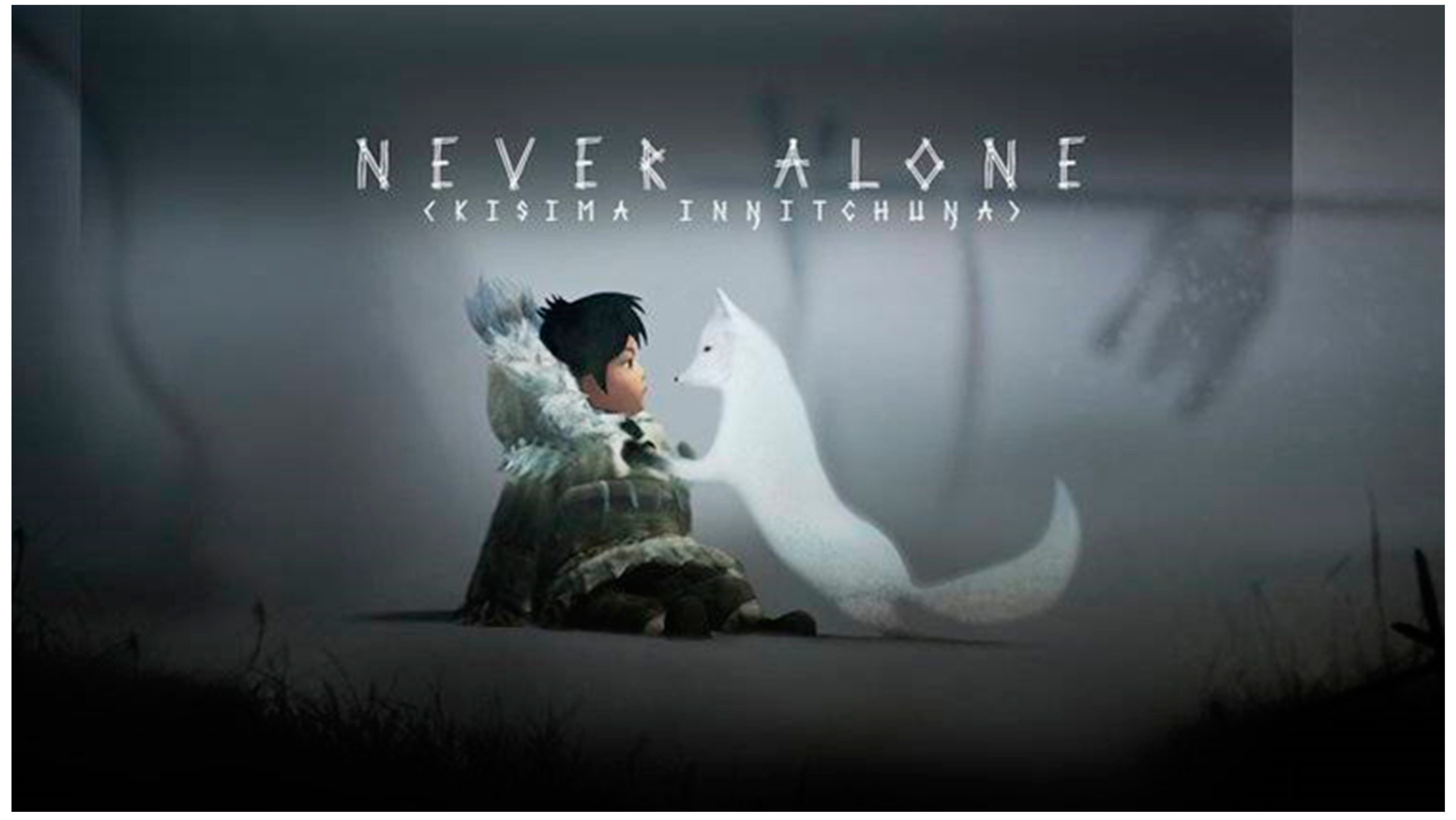
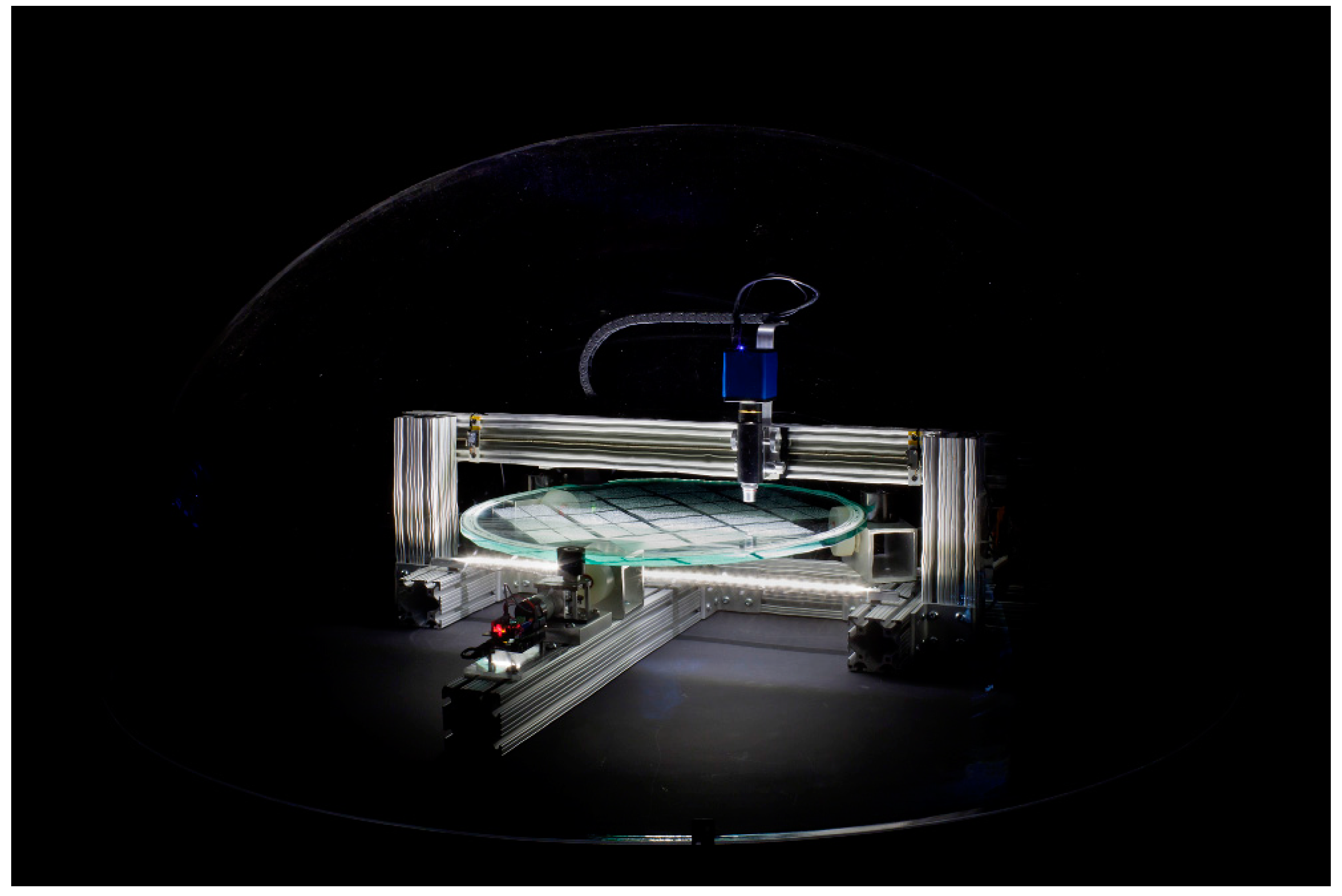
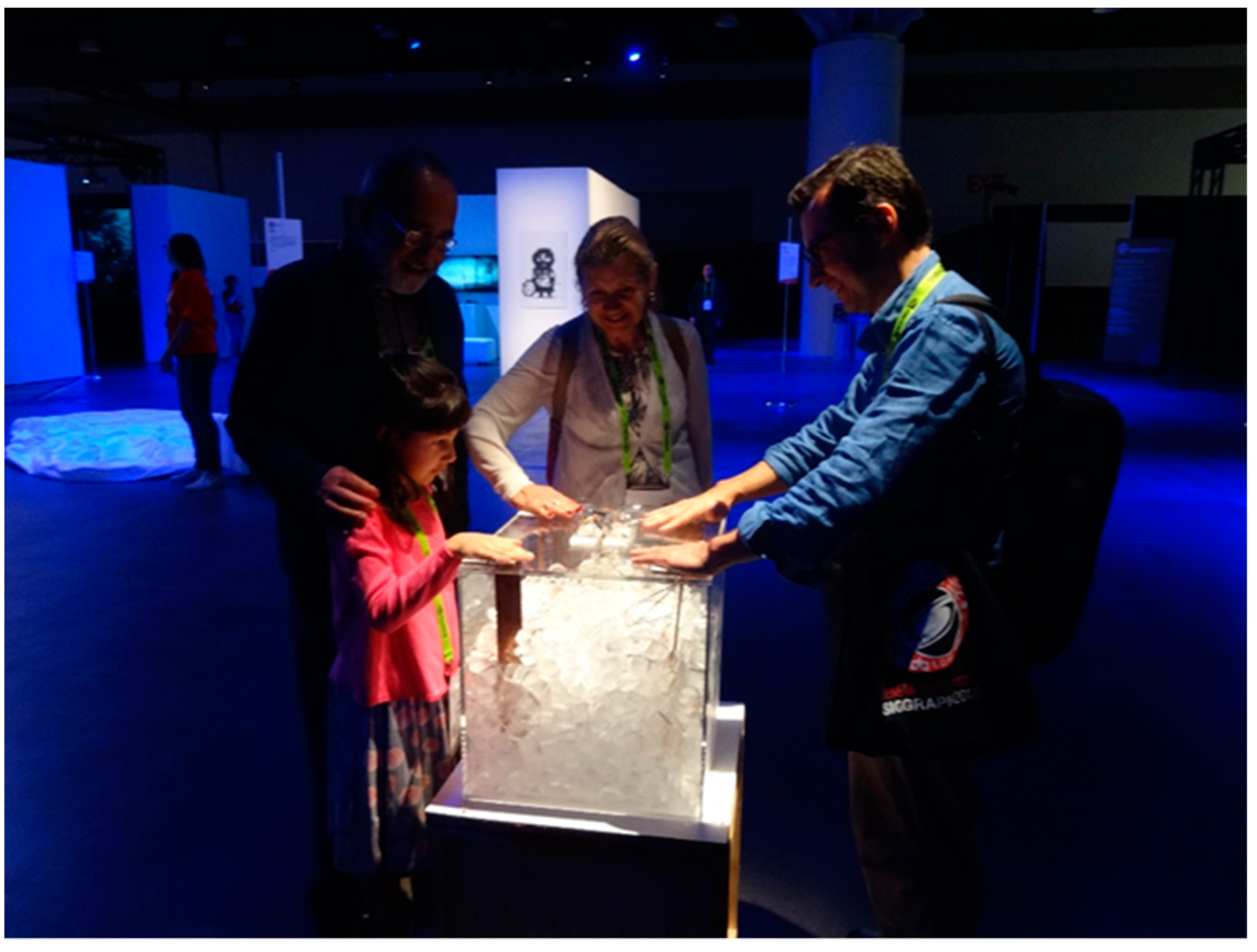
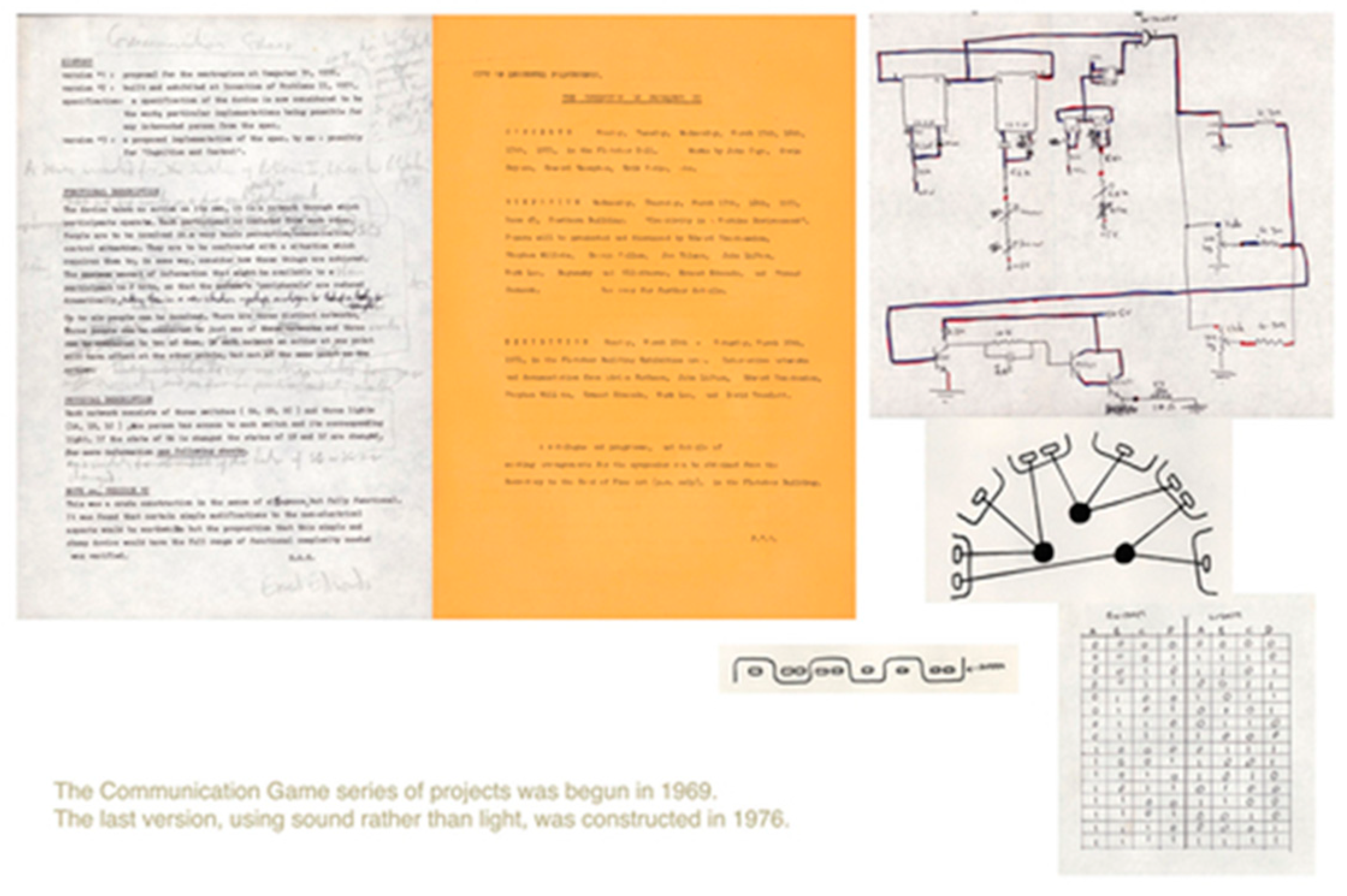
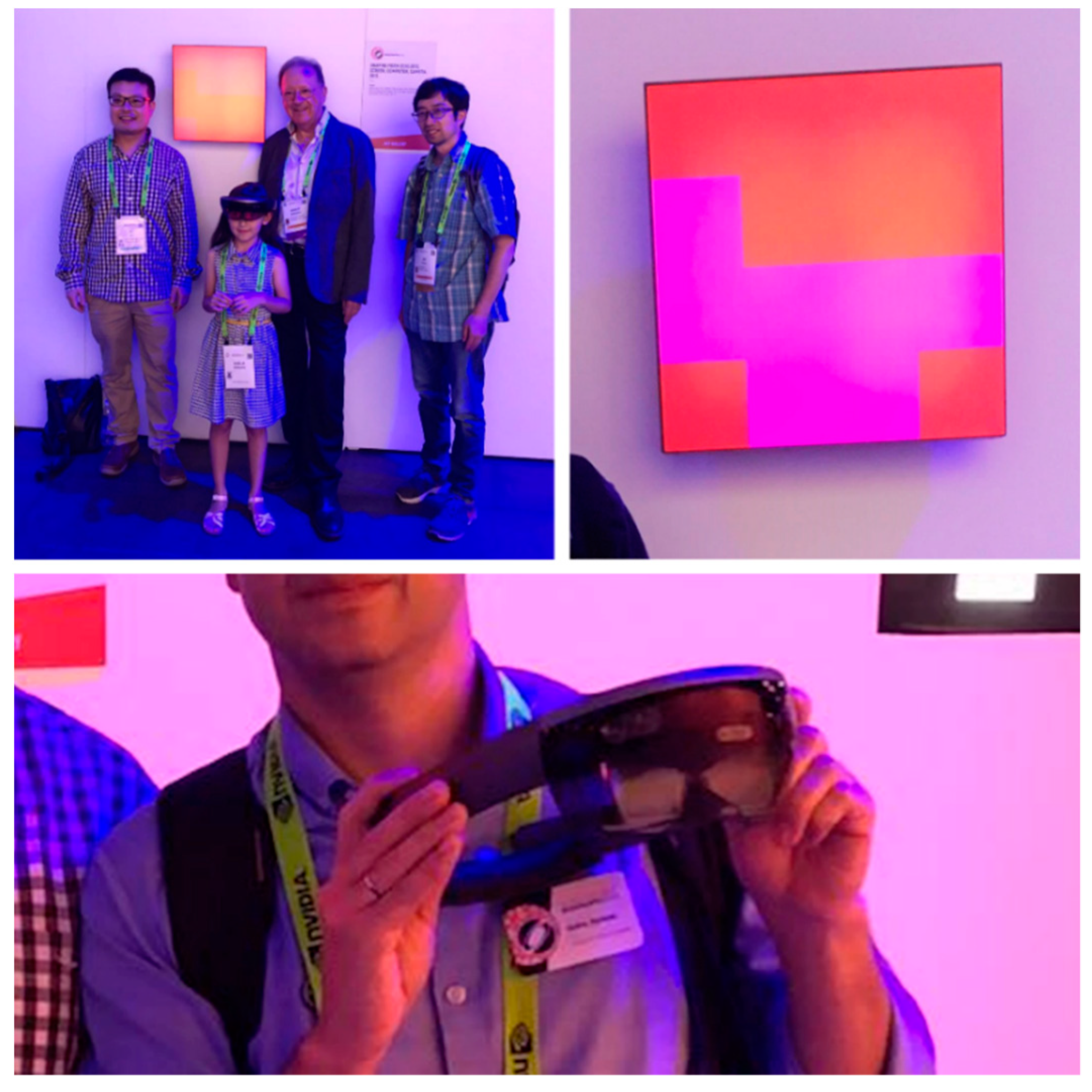
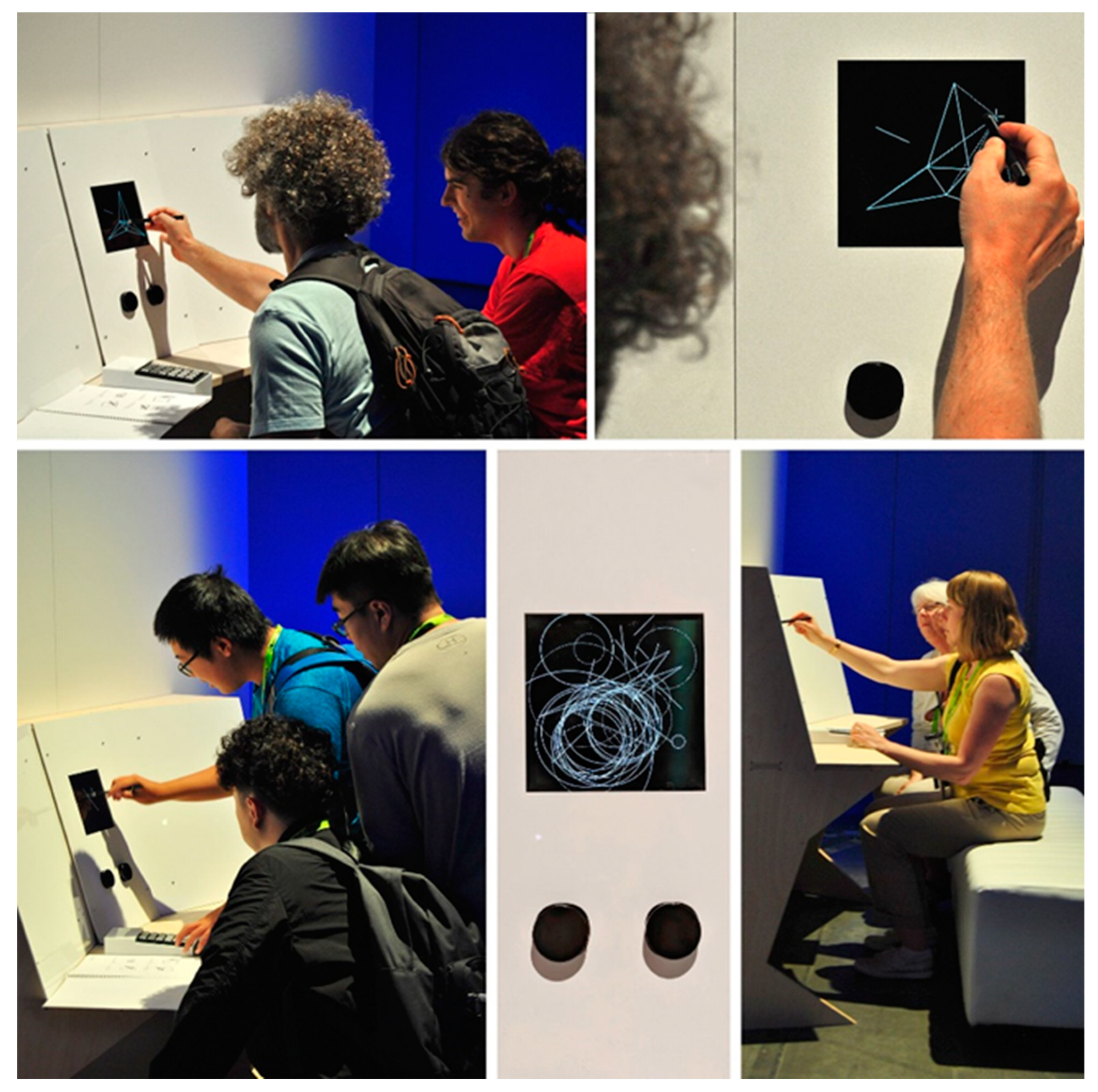
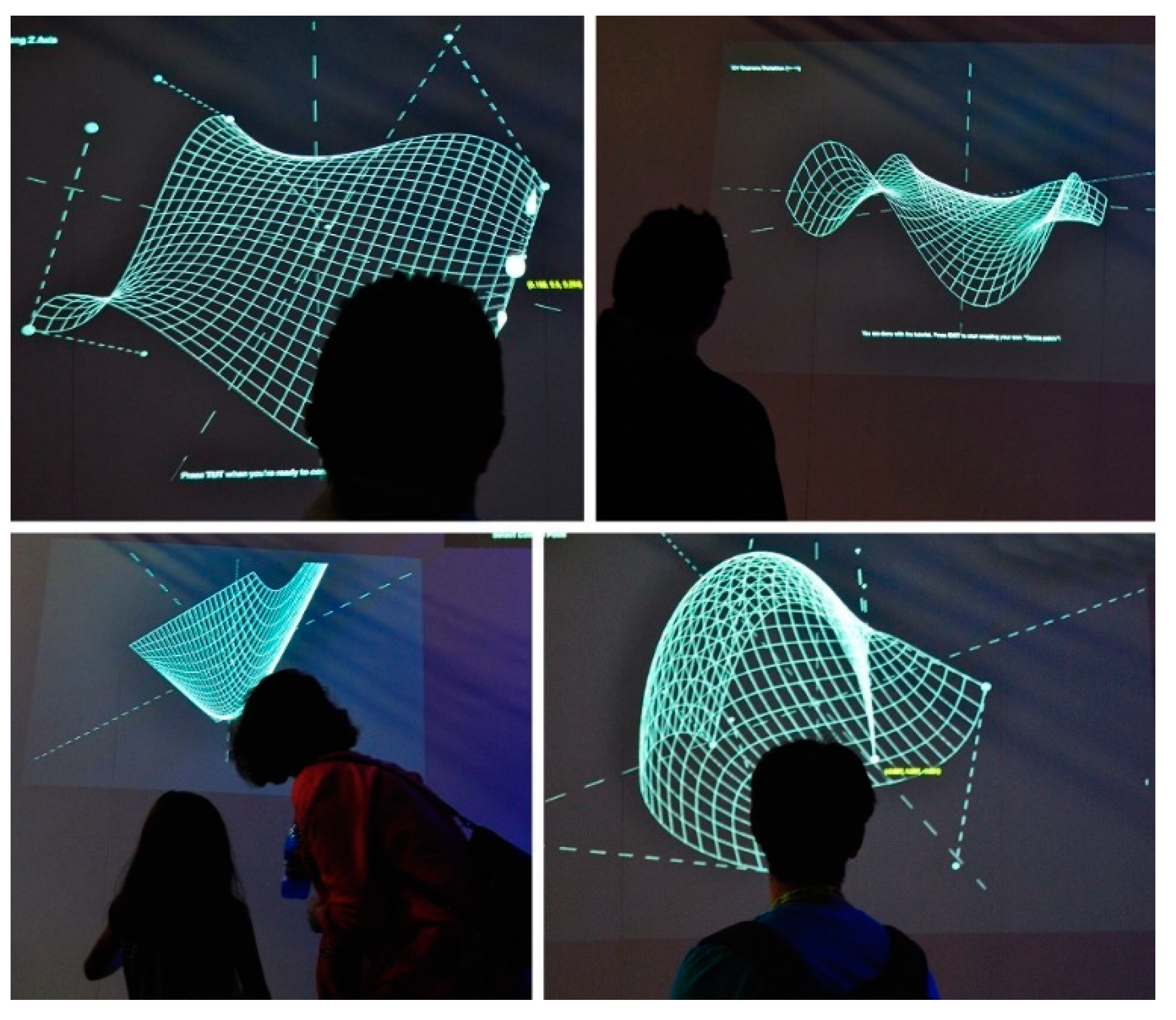
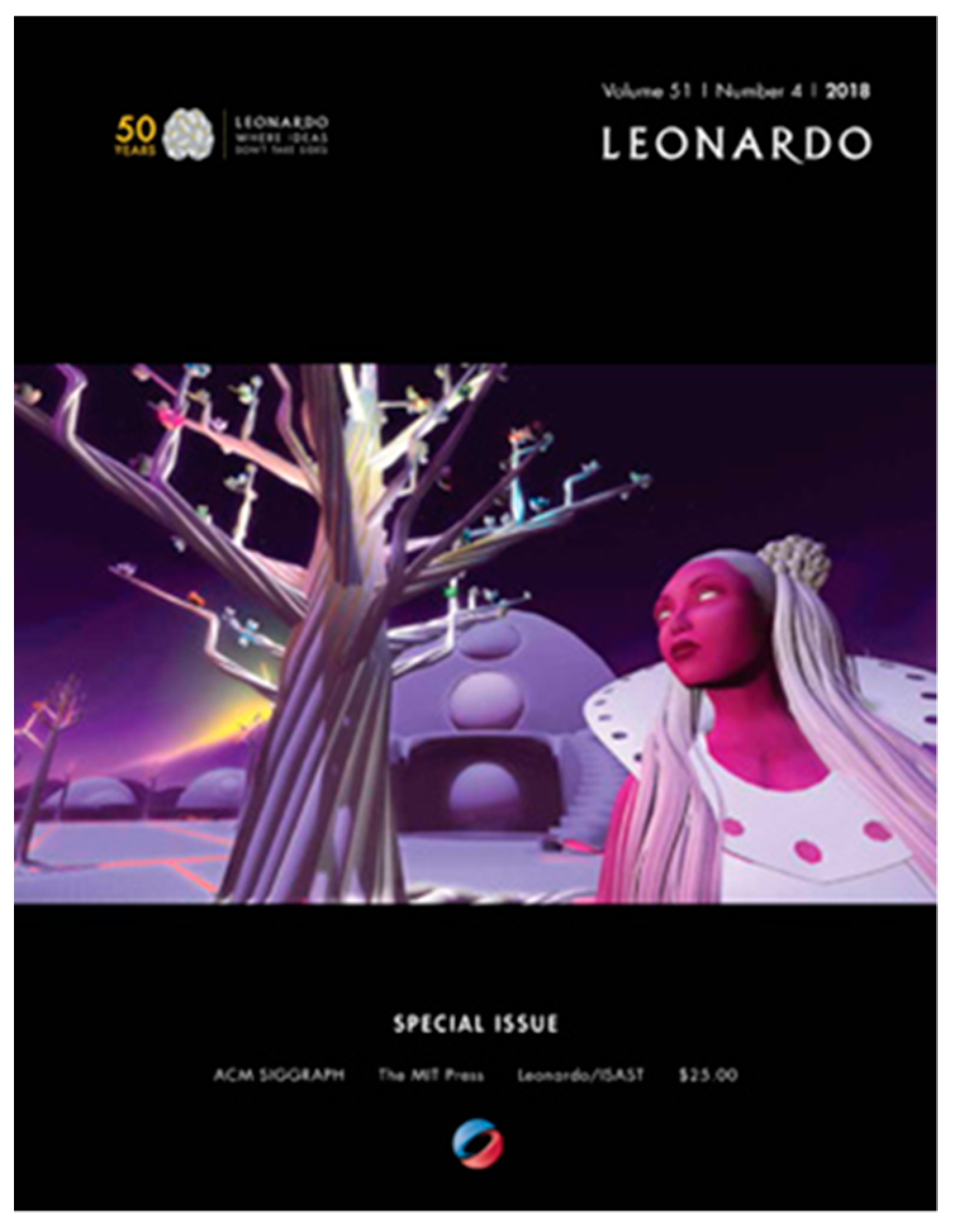
© 2020 by the author. Licensee MDPI, Basel, Switzerland. This article is an open access article distributed under the terms and conditions of the Creative Commons Attribution (CC BY) license (http://creativecommons.org/licenses/by/4.0/).
Share and Cite
Burbano, A. Imagination, Indigeneity, and Computation: The SIGGRAPH 2018 Art Gallery. Arts 2020, 9, 18. https://doi.org/10.3390/arts9010018
Burbano A. Imagination, Indigeneity, and Computation: The SIGGRAPH 2018 Art Gallery. Arts. 2020; 9(1):18. https://doi.org/10.3390/arts9010018
Chicago/Turabian StyleBurbano, Andres. 2020. "Imagination, Indigeneity, and Computation: The SIGGRAPH 2018 Art Gallery" Arts 9, no. 1: 18. https://doi.org/10.3390/arts9010018




